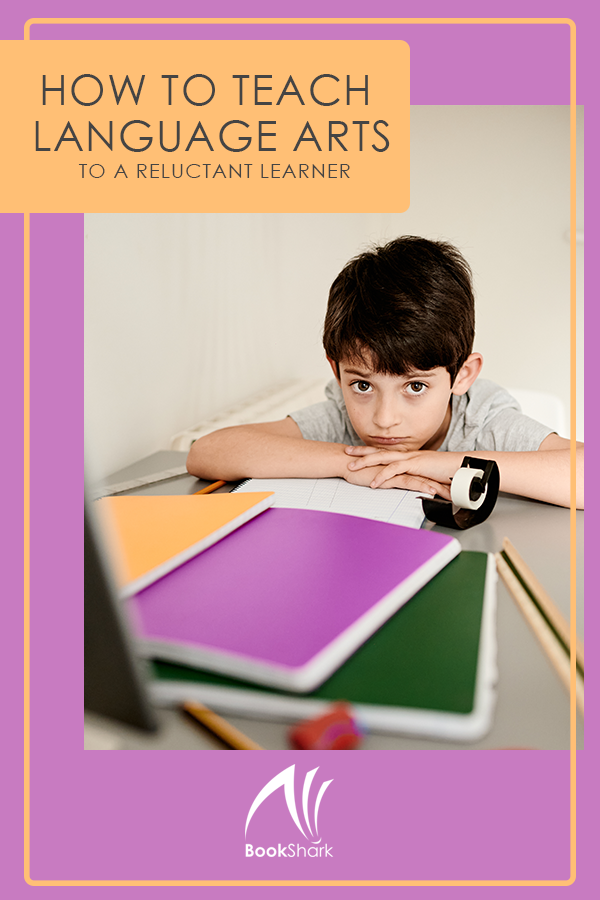When I first started explored the possibility of homeschooling, I resisted.
Hard.
I thought of dozens of reasons why I couldn’t, why I shouldn’t. I insisted. I protested.
And, as you can probably guess, I eventually accepted that homeschooling was the best option for my son.
One of my chief concerns was that I valued my relationship with my son too much to homeschool him. I was convinced that spending so very much time with him would result in us growing tired of one another.
We already had battles and emotionally charged moments, and I feared that being the person to constantly force school assignments he didn’t want to do would mean butting heads even more. I worried
- that he’d resent me for the change from public school to homeschooling
- that he would see me as a strict teacher and not his loving mom
- that lines would blur as our roles shifted
- that what was already unsteady would become unsustainable
I’m very happy that I was so very wrong.
The relationship between my son and I has grown stronger than I ever could have imagined as I’ve watched him heal, grow, learn, and thrive. I’ve gotten to know wonderful parts of his personality that I would have missed otherwise. And I have been privileged to help polish the rougher parts that always seemed to rub the wrong way before.
While we’ve grown closer and found our groove in homeschooling, I’ve stumbled a few times. Through my experiences, I’ve discovered a few temptations that absolutely have the potential to damage our relationship. Here’s what I avoid to keep from ruining my relationship with my homeschooled child.
1. Too Much Review
Most curriculum works in a spiral format. It reviews previous material while introducing new information in an attempt to keep facts and formulas fresh. This isn’t necessarily a bad format, but there comes a point when reviewing can become excessive.
While learning about the state capitals, I decided to take every opportunity to quiz and review my son
- while driving in the car
- sitting at dinner
- during commercial breaks
This was just too much. Instead of keeping facts fresh, I was negating opportunities for casual conversation and was trading connection for repetition. The freedom and peace that we enjoy in our homeschool, the chance to learn at a pace we’re comfortable with, was replaced with drills and expectations.
He wasn’t learning the capitals anymore; he was being beaten over the head with them!
The temptation to review, review, review is strong. How else can you be sure that what you’re teaching is really sinking in?
What if you devote all of this time and energy into a lesson for it to go in one ear and out the other? At the end of the day, your goal as a homeschool parent isn’t to create a recording of everything taught. It’s to inspire a love of learning in your child and to forge a relationship with them in the most intimate of settings.
What your child learns is important, of course, but conversation with your kiddo is usually sufficient to get a feel for what they’ve soaked up. Be their parent, not their drill sergeant. Sit next to them and learn together; don’t ask them to recite for you.
2. Trying to Replicate What Everyone Else is Doing
It’s tempting. So tempting.
You see detailed lessons and colorful nature journals or organized homeschool rooms and a curriculum that just works so perfectly for this family or that one. Your friend cannot get her homeschool day started without morning time and your sister’s schedule is so precise that you could set your watch by it.
Seeing how well other families are doing, it’s easy to begin to wonder if maybe you should try it, too. Maybe if you tried that curriculum your child wouldn’t struggle with spelling. If you had a dedicated homeschool room, you might be a better homeschool parent. And what about what they’re doing at the public school down the street? You heard that they’re doing this experiment and reading that book, so does it say something about you that you’re not?
Attempting to replicate what works for one family can cause you to forget (or even ignore) what works for your own. By shadowing someone else’s footsteps you rob your child of the chance to forge their own path. You create a box that you were never meant to fit inside of, and the relationship between yourself and your child suffers as you both struggle against its confines.
You, the homeschool parent, have the opportunity to meet your child where they are in every area of their life, to fine-tune and customize their education in a loving and thoughtful way. Your lesson plans can be seen as love letters to your child, the result of your dedication and devotion to what’s best for them. Be the homeschool parent that your family needs, not the one you see succeeding elsewhere.
3. Comparing. To Anyone.
In the same vein as attempting to replicate someone else’s homeschool comes the temptation to compare:

- Your slow mornings with someone else’s early rising.
- Your child to someone else’s.
- Or yourself to another parent.
- Or yourself to a homeschool philosophy.
- Your tattered books to someone else’s laminated worksheets.
Any time you begin to compare yourself or your situation to another, you invite the idea that you are not good enough. Any time you compare your child’s academic performance to that of another, you invite the idea that one is better than the other. Any time you begin to notice a deficit or weakness in your home because it’s a strength in someone else’s, you are walking a dangerous line that can too easily leave you disillusioned, dissatisfied, and dismissive of the unique needs in your own homeschool.
It’s not hard to see how comparison can ruin your relationship with your child, but it’s worth reminding yourself, as often as you need to, that it is a path towards bitterness, not betterment.
4. Resenting Your Commitment to Homeschool
I know, it seems obvious. Resenting homeschooling is obviously a no-brainer when it comes to how you could possibly ruin your relationship with your child. What’s not so obvious, however, is how we come to resent it.
Maybe you’re always having to turn down invitations to lunch with friends. Maybe you’re struggling financially and could really benefit from a second income you’re forfeiting to homeschool. Maybe you’re just having a hard day.
Little thoughts creep in and say, “If only I weren’t homeschooling, I could really…” The seed is planted, and the resentment grows.
Now instead of recognizing homeschooling as a privilege, you see it as a prison, a necessity, an obligation. Your child has become a pair of shackles instead of a partner in learning.
A decision made to bring freedom to your family can quickly convert to feelings of resentment, bitterness, offense, and displeasure. Where your relationship with your child was once a cornerstone of your homeschool, it is now a duty, a task, a chore, suffering under the illusion of obligation.
You get to homeschool! You get to share this time with your children! You get to hand-pick their education and provide them with all the love, enchantment, and opportunities they can handle. Homeschooling is a privilege, but the moment you start to see it as an obligation you begin to damage the relationship you have with your child. Suddenly they are to blame, and your reason for homeschooling becomes an excuse for your unhappiness.
There are many, many ways to ruin your relationship with your homeschooled child, but none of them are caused by actually homeschooling.
Our expectations, our ideas, our own boxes that we build and expect our children to fit into—these are the breeding grounds for relationship killers. When it comes down to it, these situations and feelings can be just as damaging in any setting. As a homeschooling parent, though, you find yourself spending more time with your children than most parents do, which creates more opportunities for these little seeds to sprout.
Really the greatest way to ruin your relationship with your homeschooled child, with any child, is to become lax in examining your own heart and motivations. By guarding yourself against feelings of bitterness or insecurity, you protect your child and your relationship.

About the Author
Jennifer Vail proudly lives in the great state of Texas with her very handsome husband and three very funny children. All three kids are educated in three very different ways according to their very different needs, which is exhausting but fulfilling. Jen’s hobbies include naps, 90’s pop culture, Netflix binges, buying books with the best of intentions to read them all, photography, and extroverting. She holds a degree in counseling but has found her calling by writing for and spending time with families of differently-wired, outlier kids—the square pegs of the round world.
She stays up way too late and drinks way too much caffeine, but has no intention of changing either. She is the community manager and contributing author at Raising Lifelong Learners where she writes about homeschooling gifted, anxious, and otherwise different kiddos, but also rambles at This Undeserved Life from time to time. She feels compelled to mention that she still very much loves the Backstreet Boys and rarely folds her laundry.




